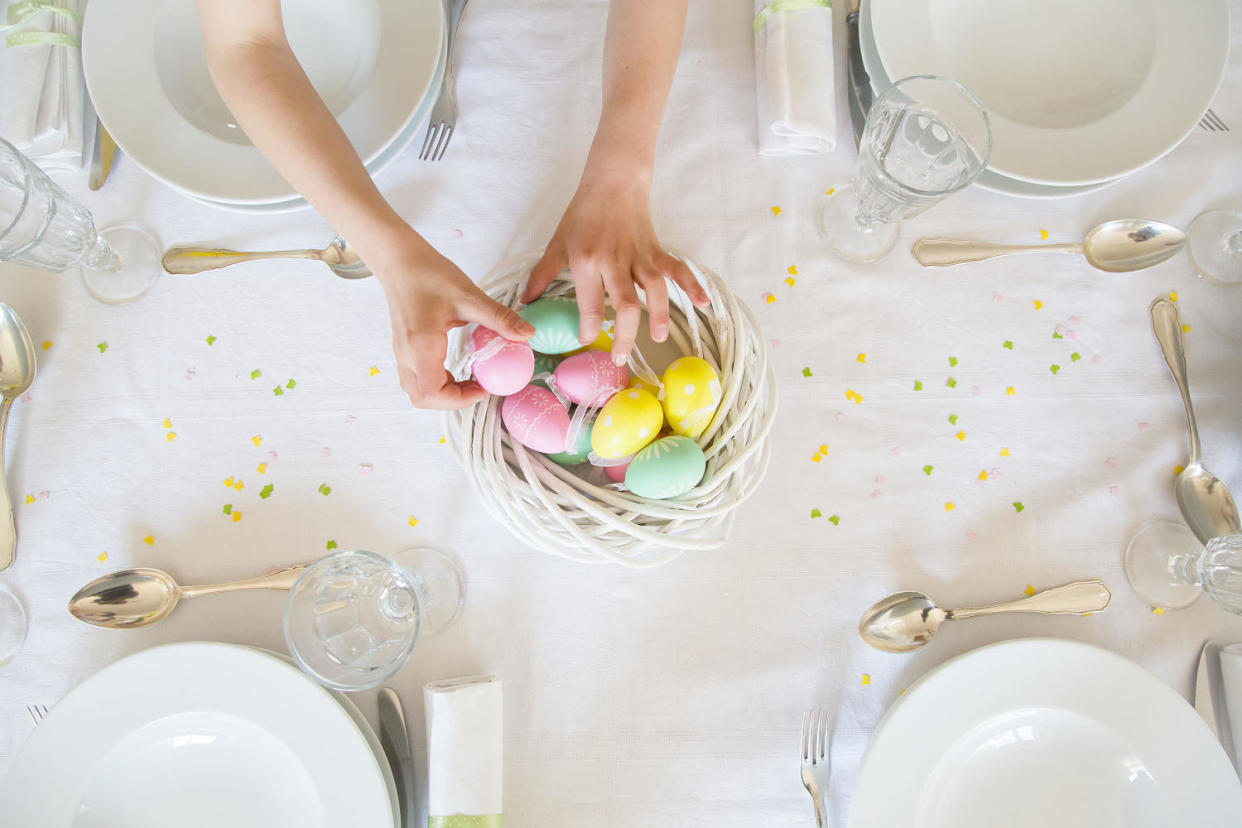The history and meaning behind Easter's pastel palette
When Easter approaches each spring, it’s hard to miss the burst of pastel decor and elaborately painted Easter eggs.
Even if you’re not Christian or don’t observe the holiday religiously, you may enjoy sprucing up your space with the delightful hues of the season.
“Easter is recognized as a religious holiday, but is also celebrated as a spring tradition. The colors of Easter are pastels that bring to mind the sights and smells of spring,” says Diana Hathaway, an interior designer and color expert. “Easter pastel colors have a charming, candy-like appeal that inspires nostalgia for past celebrations,” she continues, commenting that traditional Easter colors have religious origins in the Christian faith as early as the 1100s.
Samuel Charmetant, founder of Artmajeur, an online art gallery, expands on that, noting that as a celebration of rebirth and renewal, Easter themes are ones that resonate deeply within the art world. “Just as artists use their palettes to bring visions to life, Easter uses pastel colors to paint a picture of spring’s awakening,” he says. “These hues mirror the natural rebirth happening around us and have become symbols of hope and joy.”
From mint green and sunny yellows to pale pink, read on for the dye-lights of this spring holiday and find out what various Easter-related hues symbolize. Plus, you may even get some color inspiration for your next Easter craft project.
Easter colors and their meanings
Spring is around the corner and so are the colors associated with the season. "When we think of colors of spring, pastels with soft neutrals are the first to come to mind," says Ashley Banbury, NCIDQ, color marketing manager at Sherwin-Williams.
“The updated Easter color palette is filled with soft and sweet pastels for decorating and entertaining,” adds Hathaway, adding that although Easter colors were established thousands of years ago, the addition of Easter as a commercial holiday introduced new shades of these traditional Easter colors.
As Banbury further notes, spring shades are inspired by colors from the natural world. “As the spring flowers bloom and grass begins to grow again, it’s the optimistic shades of a new start to a season.”
Here are some classic colors of the Easter season and what they mean according to these three color gurus:
Lavender
Charmetant believes that lavender speaks to the purity and love found in the Easter narrative. “It’s a color that artists choose for its mystical qualities, evoking a sense of tranquility and spiritual renewal,” he says. (Note: Some may refer to lavender as lilac.)
Per Hathaway, if you see purple instead of lavender, that darker hue has a more somber religious association, symbolizing Lent, the 40-day period of penance, moderation, and prayer, leading up to the celebration of Easter.

Pastel pink
“Pink is a color of new blooms, from tulips to cherry blossoms,” says Banbury, who points readers towards Sherwin-Williams Krylon’s Fusion Soft Pink as reminiscent of these first petals and buds of the season.
Similarly, Charmetant highlights that this color echoes the first blush of spring flowers, symbolizing the youth and joy Easter brings into our lives. “It’s reminiscent of the fresh blooms that artists often capture as symbols of new beginnings,” he adds.
Mint green
Green, in general, is often associated with grass in religious Easter celebrations, symbolizing new life and spiritual growth, according to Hathaway. Riffing on that sentiment, Charmetant says “that mint green represents the new growth of spring.” We suppose you can take that to mean literally or metaphorically, if the latter, isn’t there just something magic about the fresh beginning of spring?
Light yellow
This color represents the warmth of sunlight and heralds the arrival of spring. “It’s a color that artists use to depict the optimism and brightness of a new day, much like Easter’s promise of renewal,” Charmetant says. Hathaway shares that gold, along with yellow, has a special place in the Easter celebration, both signifying the warmth and light of Easter. “Gold is valued for its triumphant symbolism, and is used extensively for Easter decorations,” she further notes.
Baby blue
Baby blue cupcakes? How about baby blue Easter egg designs? Don’t mind if we do. This color “reflects the clear, peaceful sky, representing serenity and calmness, harmonizing with the peaceful spirit of Easter,” says Charmetant.
How colors impact us psychologically
When it comes to celebrating, associating colors with a certain holiday can take us back to, say, the excitement of waking up to our Easter basket as a young kid or lighting the candles of the Hanukkah menorah. “One of the most-powerful effects of color on us is its ability to inspire memories and nostalgia for past eras and experiences,” says Hathaway. “The glimpse of a familiar color that has a positive association, can instantly transport us to another time,” she continues, highlighting that color associations enrich our lives by bringing the past into our present experiences in a very personal way.
This article was originally published on TODAY.com
